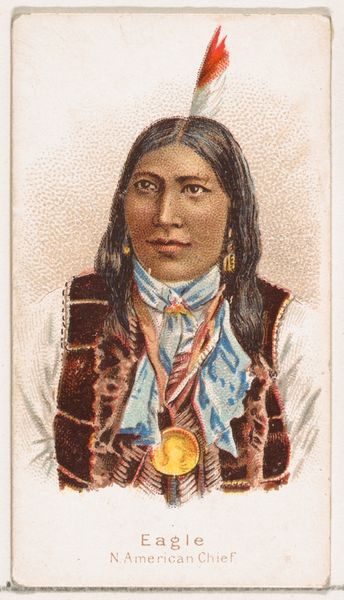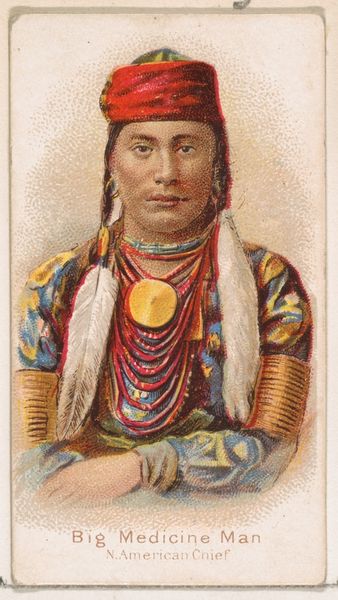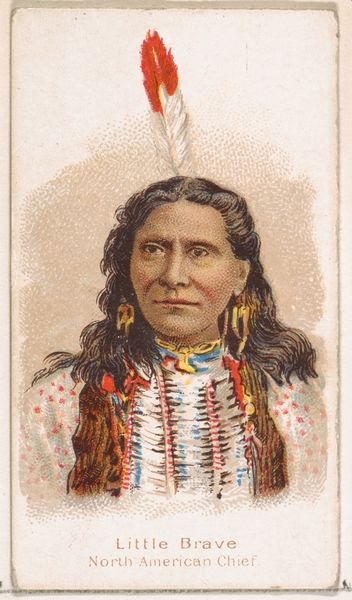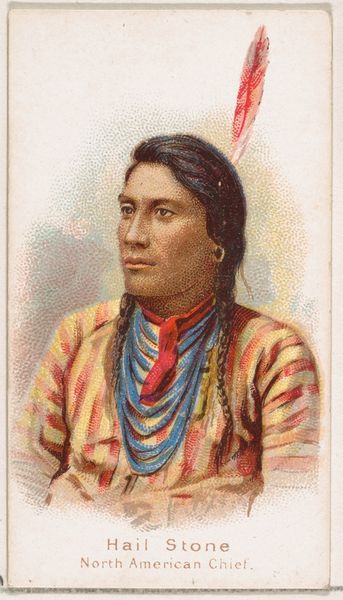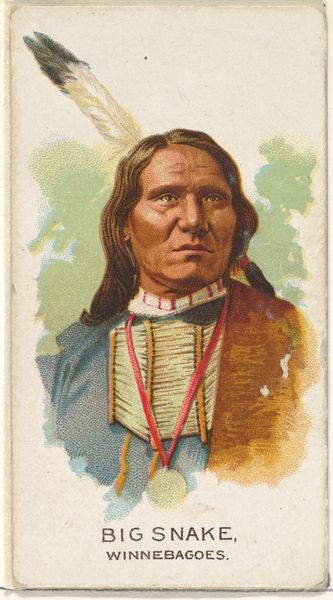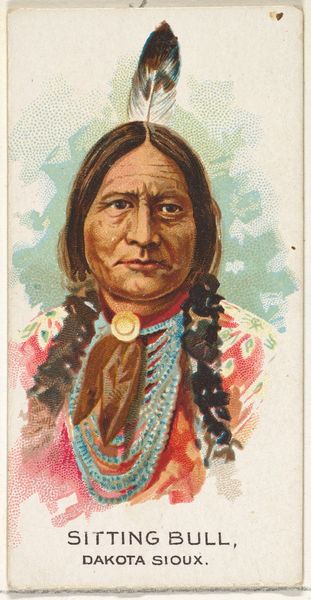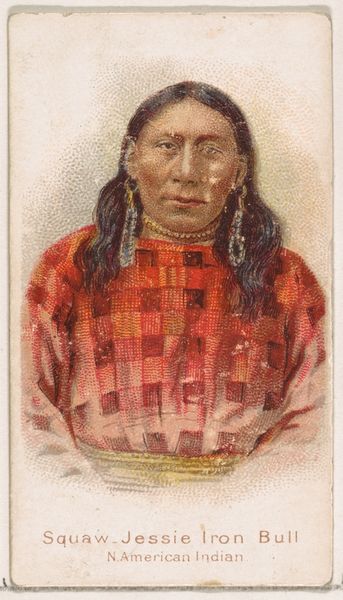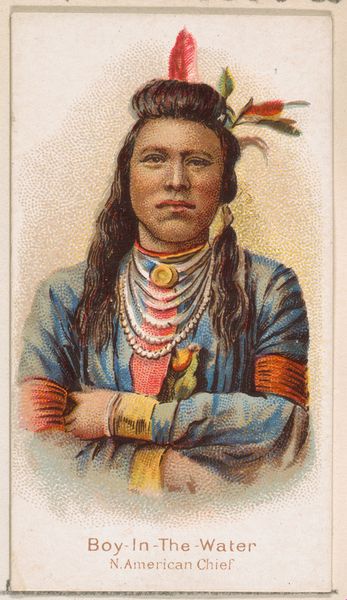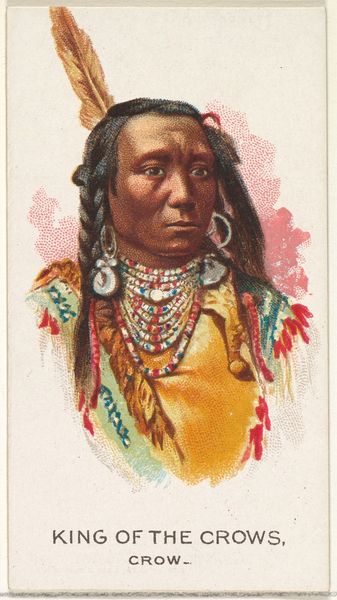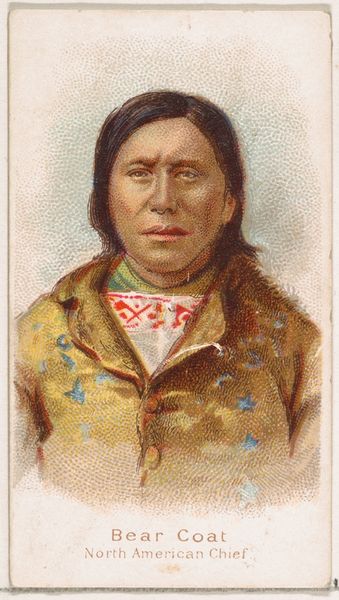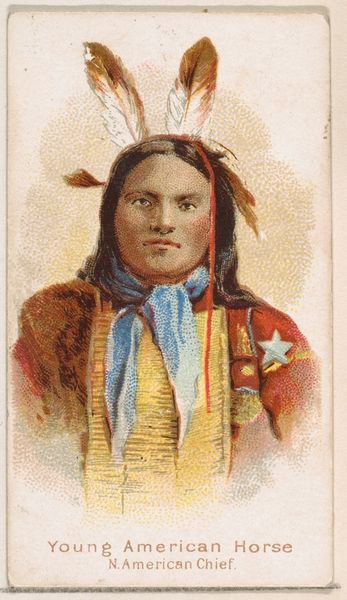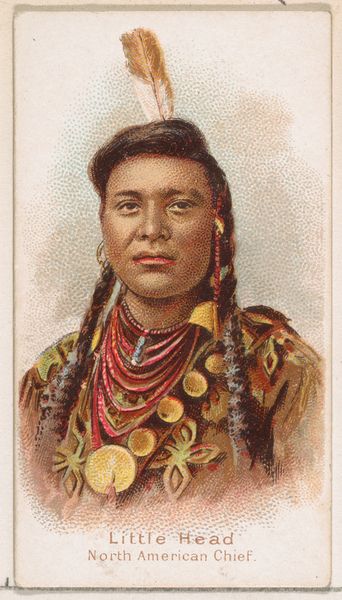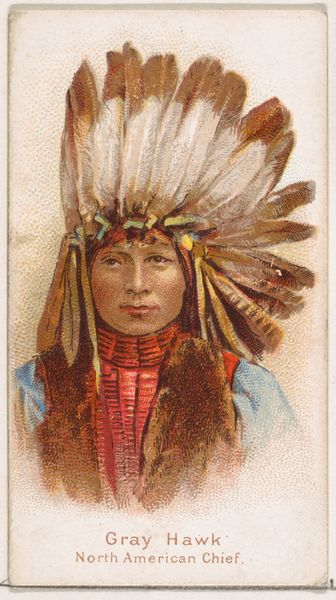
Knife, North American Chief, from the Savage and Semi-Barbarous Chiefs and Rulers series (N189) issued by Wm. S. Kimball & Co. 1888
0:00
0:00
#
portrait
# print
#
coloured pencil
Dimensions: Sheet: 2 11/16 × 1 1/2 in. (6.8 × 3.8 cm)
Copyright: Public Domain
Curator: Looking at this image, I am struck by the inherent contradiction. This is a portrait of Knife, a North American Chief, but it comes to us from a cigarette card, part of the “Savage and Semi-Barbarous Chiefs and Rulers” series by Wm. S. Kimball & Co., around 1888. Editor: The figure is quite arresting; the portrait is vividly coloured, a single feather standing prominently, gold ornaments hanging from his ears and breast, and around his neck he has a vivid orange cravat. There's a certain… regality in his gaze despite the medium’s association. Curator: Indeed, these cards served as commercial advertisements, a marker of commodity culture deeply implicated in the colonial project. Their widespread circulation perpetuated problematic, racist narratives about Indigenous people during a period of intense dispossession and forced assimilation. Editor: And what about the symbolic weight of those adornments, juxtaposed against that loaded title? He’s wearing a prominent medal of some kind. Its circular form reminds me of sun symbols, badges of power and divine right found across various cultures. Could its presence on the card serve to both "civilize" him but simultaneously mark him apart as inherently “other”? Curator: Precisely. The image attempts to contain and define him through these markers, framing him within a Western gaze while profiting from his image. The artist, in using realism, attempts an air of ethnographic accuracy, yet ultimately reduces the sitter to a type. Editor: The inherent tension here, in visual form, conveys so much about the era. On one hand, the accoutrements are perhaps used to elevate his status in the Western, white imagination; on the other hand, the branding serves to strip him of agency. It’s a battle played out across the image. Curator: Ultimately, it's a stark reminder of the complex relationship between representation, power, and commercial interests during a particularly fraught period in American history. We can observe here not a pure depiction, but a loaded interaction between cultures. Editor: And even in this small format, we confront echoes of larger narratives. Images, even as advertisements, hold embedded cultural memory. A symbol like that central medallion contains not just material value, but also hints at larger cultural dialogues about conquest and cultural domination.
Comments
No comments
Be the first to comment and join the conversation on the ultimate creative platform.
